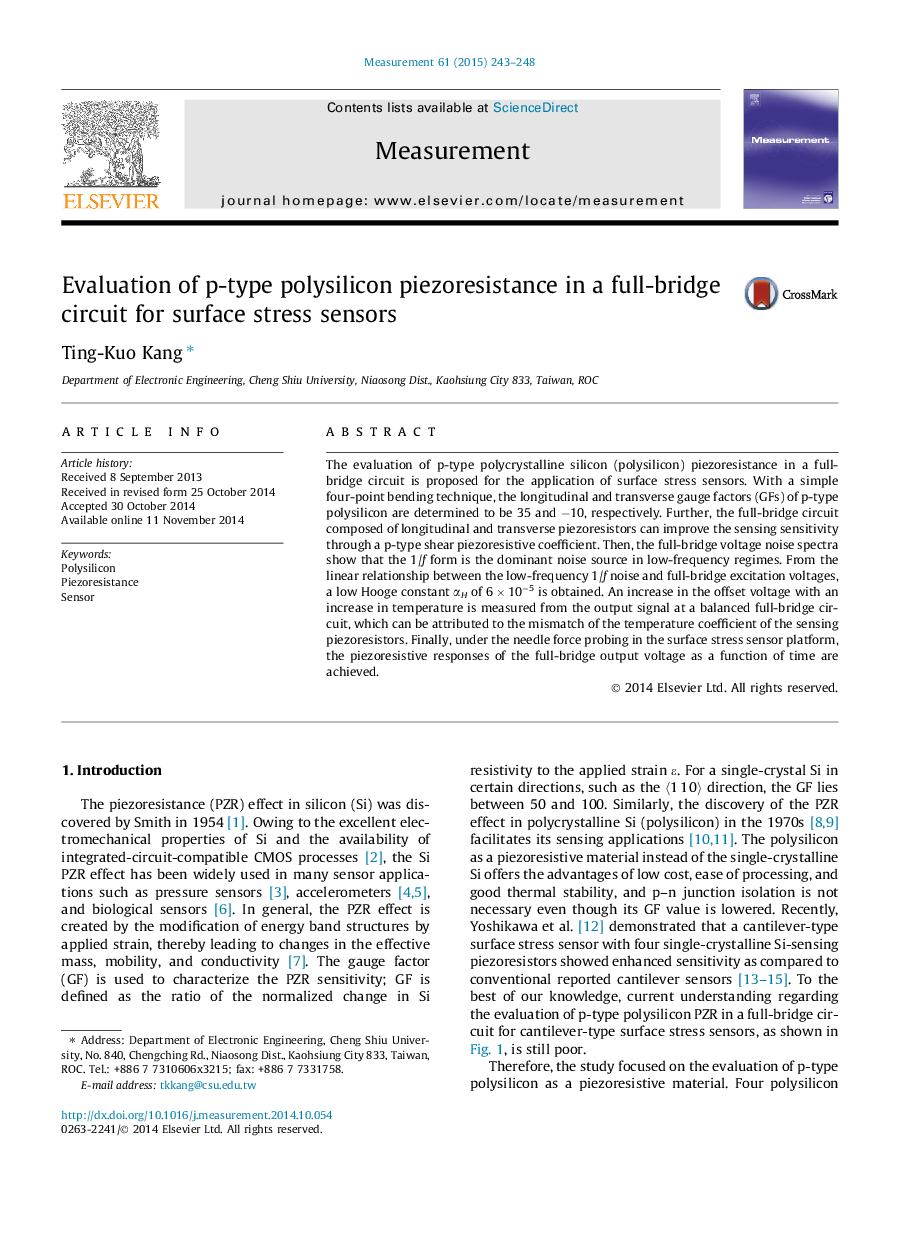| Article ID | Journal | Published Year | Pages | File Type |
|---|---|---|---|---|
| 729817 | Measurement | 2015 | 6 Pages |
•The polysilicon piezoresistance for cantilever-type stress sensors is proposed.•The 4PB technique shows to be applicable to the piezoresistance evaluation.•A low Hooge constant is obtained with a heavily-doped polysilicon.•The increased offset voltage is due to the mismatch of the piezoresistor’s TCRs.•The piezoresistive responses of the stress sensor platform are validated.
The evaluation of p-type polycrystalline silicon (polysilicon) piezoresistance in a full-bridge circuit is proposed for the application of surface stress sensors. With a simple four-point bending technique, the longitudinal and transverse gauge factors (GFs) of p-type polysilicon are determined to be 35 and −10, respectively. Further, the full-bridge circuit composed of longitudinal and transverse piezoresistors can improve the sensing sensitivity through a p-type shear piezoresistive coefficient. Then, the full-bridge voltage noise spectra show that the 1/f form is the dominant noise source in low-frequency regimes. From the linear relationship between the low-frequency 1/f noise and full-bridge excitation voltages, a low Hooge constant αH of 6 × 10−5 is obtained. An increase in the offset voltage with an increase in temperature is measured from the output signal at a balanced full-bridge circuit, which can be attributed to the mismatch of the temperature coefficient of the sensing piezoresistors. Finally, under the needle force probing in the surface stress sensor platform, the piezoresistive responses of the full-bridge output voltage as a function of time are achieved.
